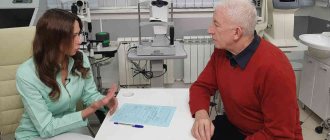Phthisiology is one of the branches of clinical medicine. He studies the causes, mechanisms of development and patterns of spread of tuberculosis. The direction also studies pathological processes against the background of tuberculosis, methods of its prevention, diagnosis, therapy and rehabilitation of patients with serious illness.
What is included in the list of responsibilities of a phthisiatrician, how often do you need to be diagnosed and what do you need to know about tuberculosis therapy?
General characteristics of the direction
Tuberculosis is one of the 10 leading causes of death worldwide, among both adults and children. But the disease is curable and can be corrected in a timely manner. Phthisiology deals with the causes, patterns, treatment, and prevention of tuberculosis.
Content:
- General characteristics of the direction
- What is included in the list of responsibilities of a doctor?
- Features of the work of a children's phthisiatrist
- What symptoms should you seek help for?
- Diagnostic methods
- Features of therapy
Therapy takes place in closed TB dispensaries/offices, hospitals and sanatoriums. In them, the phthisiatrician is engaged in diagnosis, therapy, prevention and dispensary observation of patients.
Phthisiatricians advise other medical institutions on early detection of the disease. Every patient with tuberculosis needs constant monitoring by several highly specialized specialists, because medications alone are not enough.
In some countries, “phthisiosurgery” is distinguished separately. For example, in Russia and Ukraine, thoracic surgeons deal with surgical treatment of patients with tuberculosis, and orthopedists work on cases of osteoarticular tuberculosis.
Tuberculosis of the eyes is treated by ophthalmologists, and tuberculosis of the genitourinary organs is treated by gynecologists and urologists. A referral for examination by another specialist can only be obtained from a phthisiatrician. Treatment practices may differ geographically and the general situation with the disease in the region.
Where can a phthisiatrician work?
There are vacancies for TB doctors in public and private medical institutions:
- clinics;
- tuberculosis dispensaries;
- multidisciplinary hospitals;
- anti-tuberculosis sanatorium-resort institutions.
Specialists can also get a job at a research institute or give private consultations to patients.
Photo source: pressfoto/freepik
What is included in the list of responsibilities of a doctor?
A phthisiatrician deals with the diagnosis and treatment of tuberculosis, regardless of location (liver, intestines, lungs, bones or other systems).
The doctor’s competence includes examination and examination of the lungs, bones and joints, epithelium, meninges, eyes, lymph nodes, organs of the gastrointestinal tract and genitourinary system.
Why is a phthisiatrician obliged to pay attention to the whole body? Because tuberculosis can develop in any organ or area of the body.
Only after a comprehensive diagnosis can a specialist issue a conclusion and begin therapy.
Phthisiatrician - what he does and what he treats
In the practice of a phthisiology specialist, the following diseases are encountered:
- lung disease;
- development of leprosy;
- ocular tuberculosis;
- development of meningitis;
- Addison's disease;
- damage to the intestinal tract;
- damage to the genitourinary system;
- tuberculosis of the reproductive system in women and others.
Among the duties performed by TB doctors:
- hospitalization of patients;
- examination of patients;
- dispensary observation;
- implementation of vaccinations;
- identification of tuberculosis patients;
- assessment of the patient's ability to work;
- diagnosis and treatment of patients with sarcoidosis;
- carrying out sanitary education work among people and so on.
During the initial examination, the TB doctor listens to complaints, studies the results of examinations, and interviews the patient about lifestyle and past illnesses. The specialist also prescribes laboratory examinations - histological and microbiological.
At the follow-up appointment, the doctor develops a treatment regimen: determines the resistance of strains and drugs, decides how many components the patient will take and for how long. For rehabilitation, a specialist can send the patient to a sanatorium-resort treatment.
Features of the work of a children's phthisiatrist
A pediatric TB specialist diagnoses, treats and gives recommendations for the prevention of tuberculosis. He is most often contacted after a Mantoux test to clarify the results or to vaccinate against a disease.
A visit to a TB doctor is a mandatory part of the annual medical examination.
Without a certificate of health, a child will not be allowed to attend kindergarten or school. Reasons for an unscheduled visit to the doctor:
- general weakness, increased body temperature, increased sweating;
- sudden weight loss, refusal to eat;
- cough with sputum or streaks of blood;
- positive Mantoux test reaction, atypical enlargement or thickening of the papules.
A referral for examination is issued either by a local pediatrician or a school nurse. You can also seek advice from a private clinic.
The advisability of refusing a TB doctor
It has become fashionable to refuse vaccination of children, including anti-tuberculosis vaccinations and tests. Many parents argue that according to the law they have the right to refuse any tests and vaccinations, and they are right. But they are right only within the limits of the law! What if we consider the situation from a medical point of view? Refusal to see a TB doctor will be the first step towards becoming infected with tuberculosis, because this disease is transmitted by airborne droplets, and no one will keep the child in a sterile cap. A child’s body is very susceptible to various diseases, and even being near a person with tuberculosis can lead to disastrous consequences, but can parents give a guarantee that passers-by, people sitting on the same bus, and neighbors do not suffer from tuberculosis?
One more thing - in any case, you will need a certificate from a phthisiatrician to attend a kindergarten or school, so a visit to this specialist is mandatory. But a doctor cannot issue a health certificate without conducting examinations - in this case it will be a Mantoux test...
Parents may refuse vaccination, but given the increasing prevalence of tuberculosis, this decision will be inappropriate. It is much easier to do a Mantoux test (especially since it is not a vaccination!) and get a TB doctor’s conclusion that the child is healthy - and the parents themselves will be calm, and there will be no doubters left in the children’s team.
A visit to a pediatric TB specialist is not a death sentence. But if necessary, this specialist will be able to prescribe tuberculosis prevention, making the risk of developing this disease even after contact with the patient minimal.
Related services: Pediatrician consultation
What symptoms should you seek help for?
A person infected with tuberculosis may not even be aware of his condition and can function quietly for several years. Typically, an infection makes itself felt when the protective function of the immune system is disrupted - illness, mechanical injury, and so on. In order to detect changes in the body in a timely manner, begin therapy and not jeopardize the health of others, you need to consult a phthisiatrician at least once a year.
What symptoms should alert the patient? Increased body temperature, severe continuous cough with sputum production, increased sweating, fatigue, apathy and sudden changes in weight. Chest pain and general exhaustion should also be a reason to visit a doctor.
Don't associate health problems with temporary fatigue or a common cold. Perhaps the body is fighting a much more serious pathogen. Be attentive to yourself, get diagnosed on time and do not delay visiting a doctor to avoid complications.
Areas of activity of a phthisiatrician
As a rule, the lungs and bronchi are most often affected by tuberculosis infection, but this is not always the case. Tuberculosis can affect: bones, intestines, liver, kidneys, muscles and blood vessels. In parallel, the following forms and stages of the disease are within the scope of competence of a phthisiatrician:
- External tuberculosis, which affects mucous tissue and lymph nodes;
- Tuberculosis of internal organs (kidneys, liver, genitals, etc.);
- Tuberculous meningitis at any stage;
- Leprosy;
- Sarcoma and sarcomyoma.
Be sure to read articles about tuberculosis of the lungs and extrapulmonary organs.
In most cases, tuberculosis is asymptomatic, so there is a risk that if it is affected, for example, the genital organs will lose the ability to reproduce. Therefore, there are narrow specialists, such as: phthisiatrician-gynecologist or phthisiatrician-urologist.
Diagnostic methods
After the first consultation, the TB specialist issues directions for tests. Before the next visit, it is necessary to do a general blood test, chest x-ray, and tuberculin skin test (depending on the patient’s age).
Additionally, the doctor may need microbiological culture of various materials (pus/urine/sputum), liver tests (blood biochemistry), and an examination of the visual organs by a highly specialized doctor. Also, if necessary, you need to undergo computed tomography, MRI, cerebrospinal fluid diagnostics and other manipulations.
Do not expose your body to additional stress; undergo only those diagnostic methods prescribed by your TB doctor.
Observation by a TB specialist for healthy children
As a rule, in healthy children, prevention, control of vaccine administration and revaccination, and control of samples are carried out by a pediatrician. Children are referred to a phthisiatrician if a decision is made about revaccination if there is a medical outlet or if tuberculin tests are positive.
It is important to know that having a vaccination (BCG) primarily protects your child. Since 1962, Russia has carried out comprehensive vaccination of children, a practice that continues to this day. Today, BCG is the only tuberculosis vaccine available, and WHO considers it as a life-saving element of measures to protect against the disease.
Each parent has the right to decide whether to vaccinate their child with one vaccine or another. But world practice in the fight against tuberculosis has proven that the disease is tens of times more dangerous than post-vaccination complications.
Subspecialties in pulmonology
- A pediatric pulmonologist solves problems with the lower respiratory tract in children under 18 years of age.
- A pulmonologist-surgeon operates exclusively on pathological changes in the bronchopulmonary system (cysts, abscesses, injuries, congenital anomalies).
- A pulmonologist-oncologist conservatively and surgically treats neoplasms of the bronchi and lungs of various etiologies.
- A pulmonologist-allergist identifies the causes, treats and prevents allergopathology of the lower respiratory tract.
- A pulmonologist-TB specialist deals with all issues of pulmonary tuberculosis.
A general pulmonologist works closely with pediatricians, ENT doctors, cardiologists, phthisiatricians, oncologists, allergists, transplantologists, and resuscitators. It is in demand today, because due to the unfavorable environmental situation in the country, the number of lung diseases and deaths from them is increasing.
The doctor deals with the consequences of smoking - cough, shortness of breath, inflammation of the trachea and larynx.
Requirements for a pulmonologist
Basic requirements for a pulmonologist include:
- Higher medical education, current accreditation certificate in pulmonology.
- Ability to do provocative skin tests and determine immunoglobulin levels.
- Skills in working in a unified information system of a medical organization.
Sometimes you need to know techniques to help smokers give up cigarettes.
In Russia, pulmonology became a separate field only in 1986.
How does a pulmonologist treat?
A pulmonologist prescribes different treatments. In some cases, conservative treatment is sufficient, in which the use of antibacterial and expectorant drugs can be combined with inhalations and physiotherapeutic procedures. In some cases, endoscopic methods are used, for example, when there is no other way to clear the bronchi of mucus and pus.
In our clinic, patients are seen by pulmonologist Maria Yuryevna Tsapaeva, an experienced specialist. She will conduct a diagnosis, prescribe treatment, help you choose breathing exercises or create a preventive program.
You can make an appointment with a doctor by calling 8(83159) 9-22-10.










